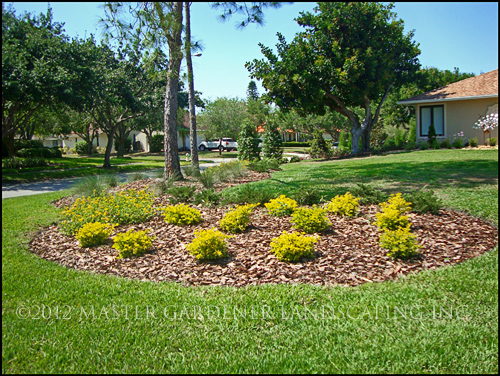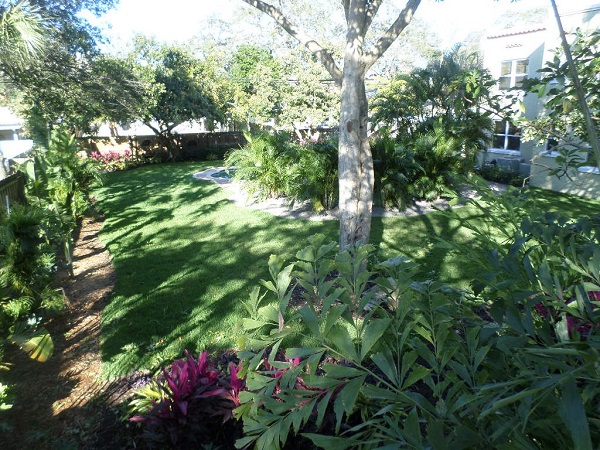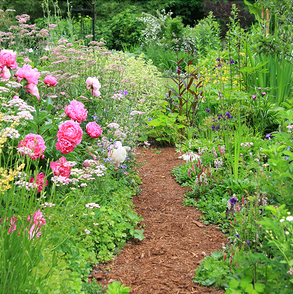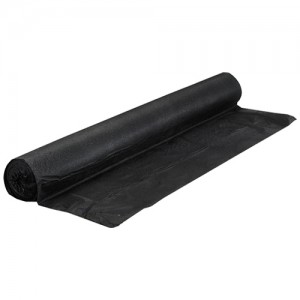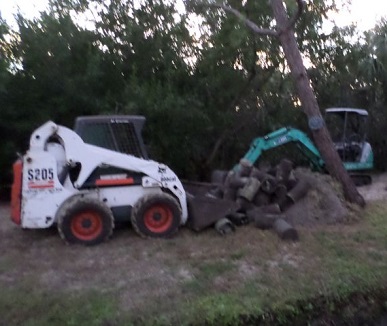The term weed has a broad, negative connotation that may sometimes cast an unfair shadow over some useful and desirable species. In some native settings, invasive varieties of plants are removed to let the desirable species flourish in their environment. Many homeowners have embraced this approach of weed control. Lets look at five different means of weed control that can be used in different situations.
Create Shade
Although there are some exceptions, generally speaking, weeds are going to have less tendency to grow in shaded areas because the photosynthesis process is interrupted and weed seeds may not be able to germinate. And although a more shaded area will typically have more moisture which can provide more suitable conditions for some weeds to flourish, overall I find that shaded conditions will make for fewer weeds.
Some effective ways of shading beds are:
- Properly placed trees
- Plant varieties of ornamental plants at a close spacing and the plants themselves will provide the ground with some shade.
- Pergolas and arbors can offer a respite from the sun and provide beds with shade especially with the use of shade cloth.
- Installing a planting bed along the north side of a structure such as a exterior wall provides a built-in shade situation.
Pre-emergent Herbicides
Since I am not a licensed certified pest control operator I will refrain from giving any expert advice in this area. I have noticed that Preen®, which is a brand of pre-emergent herbicide aimed at the homeowner/retail market does advertise a lot. I have never gotten any feedback though on how well it performs in our area.
Post-emergent Herbicides
Again such herbicides are somewhat out of my area of expertise but I do want to bring out some general points of what I know. There is a common misconception about the popular herbicide Roundup®, that is if you spray weeds that are around other plants that it will kill them too. The fact is that you must make contact with the foliage for it to be absorbed and translocate through the plant and kill the roots of the plant. Once any of the Roundup® spray makes contact with the ground it actually neutralizes and is no longer effective. So as long as you are careful and spray around the shrubs without letting any overspray get on the foliage you can be confident that you will not hurt the plants no matter how many times you repeat the process.
With that in mind if Roundup® is used on “sucker growth” such as on a Wax Myrtle it could, with repeated applications stress the tree and eventually kill it. There are other post-emergent herbicides on the market that work by a different method that is the concept of foliar burn. These work quicker than Roundup® but are not as likely to kill the roots.
Ground Cover Plants
Ground cover plantings such as Minima Jasmine can sometimes be used to assist in controlling weeds in a certain area. But immediately after planting the area will be susceptible to weeds until the plants have a chance to grow together and cover the ground. Some preparation prior to planting the ground cover can help but you still have to be prepared for weed maintenance, often hand weeding, until the ground cover grows in.
Here are some ground cover prep tips for Minima Jasmine and other vining ground covers:
- Only apply a light layer of mulch, about 1” should do it. This will allow the vines to attach to the ground without growing on top of a thick layer of mulch.
- Plant at a spacing of 12” on center in order to get the plants to grow together quicker.
- Don’t over water which encourages weed growth.
- When you plant apply Osmocote® granules and then after three weeks apply a liquid fertilizer one time per week for at least a month.
- Consider a ground cover that provides maximum shade to the ground such as Giant Green Liriope or Indian Hawthorne.
- Always limit the use of a ground cover to their preferred environment whether it is sun, shade, or partial shade, so that they will grow at their proper rate and fill in the area as soon as possible.
- Ground covers planted under the base of a shade tree are an ideal match because often grass will not grow at the base of a tree because it is too shady and the tree competes for available nutrients. Tree roots can also make mowing at the base of the tree difficult. Conversely the shade of the tree inhibits weed growth in and around the ground cover plants.
So there are the first four effective strategies in controlling weeds in planting beds. Another good remedy for weeds is Weed Barrier Fabric. Read our article titled “Just one weapon in ‘War on Weeds.'”


